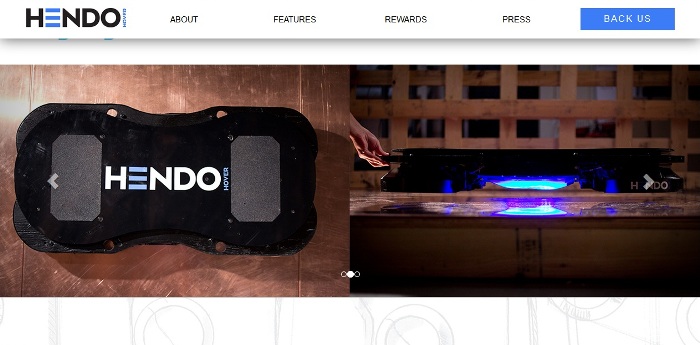New Anti-Earthquake Technology Makes Buildings Hover as the Shaking Ensues
In the later part of last year, this blog featured the Hendo Hoverboard in a post about the best inventions of 2014. It appears the technology behind this interesting device isn’t just applicable to personal transportation or for recreational purposes. Arx Pax, the California-based company behind the Hendo Hoverboard, announced earlier this week that they have developed a technology that will hover a building above the ground during earthquakes, preventing damages from the violent shaking.
Earthquake Proofing
Greg Henderson, the CEO of Arx Pax, claims that the company has developed a method that integrates the US Geological Survey’s ShakeAlert System with its proprietary technologies dubbed as the magnetic-field architecture (MFA) and the three-part building foundation system. Essentially, what this new anti-earthquake technology does is to make a building somewhat float above the ground to avoid being shaken by the damaging tremors and temblors.
How It Works
Arx Pax’s new earthquake proofing system works by decoupling a building from the ground as triggered by the information from the USGS ShakeAlert system. Henderson says that their technology only needs one second of warning for the hovering mechanism to activate.
Arx Pax’s three foundation system is a patented technology that employs the company’s Hoverboard technology. The difference is that it’s on a bigger scale. Four round engines are used below the foundations to create magnetic fields that cause hovering above a copper surfaces. The foundation hovers for around an inch – just enough distance to prevent any destructive shaking from affecting the building and its contents. The three-part foundation system come with a containment vessel designed to keep everything above it from shaking during the lateral movements caused by an earthquake.
Comparing It to Other Anti-Earthquake Systems
At presents, there are already technologies created to prevent buildings from collapsing during earthquakes. These are collectively referred to as “base isolation” systems designed to significantly reduce the movements of a building during an earthquake. Base isolation methods cause a building a “float” above its foundation on lead-rubber bearings. There’s no actual floating but the building appears to float because its movements are dramatically reduced as the connections between the substructure and superstructure are made flexible to compensate for the shakes. It’s comparable to how the optical image stabilization system in cameras work.
The Japanese have taken base isolation to new heights by making use of a cushion of air. With their base isolation technology, an air compressor forces air between the building and its foundation. This layer of air separates the building and its foundation by around 3 centimeters, preventing earthquakes from wreaking havoc on the building’s contents and structural integrity.
Dampers or shock absorbers may also be used in creating earthquake-resistant buildings. They work in the same way as the dampers in vehicles work. Dampers or shock absorbers are placed at each level of a building, between a column and a beam, to dampen the horizontal motions that take place during an earthquake. For taller skyscrapers, damping may take on a different form. Instead of shock absorbers placed in between beams and columns, these taller structures may employ a system that makes use of a giant pendulum near the top of the structure. The pendulum is filled with viscous fluid that dampens shakes. When an earthquake strikes, the pendulum naturally moves in the direction opposite of the shaking to negate the damaging movements and keep the building relatively steady. The pendulum is usually referred to by engineers as a tuned mass damper considering how it is designed to be in tune with a building’s natural vibration frequency.
These current earthquake proofing technologies have proven to be quite effective but Henderson argues that his company’s three-part foundation and hovering system is better. He has two reasons for saying such a claim: lower cost and near-complete shaking stoppage.However, since this new technology from Arx Pax has not been tested on an actual building yet, Henderson’s words will have to be taken with generous grains of salt for now. Nevertheless, University of California at Berkeley Seismological Laboratory’s external relations officer, Jennifer Strauss, has been quoted by Arx Pax on one of its press releases, to have said that Arx Pax’s new MFA base isolation technology, together with ShakeAlert, can lead to state-of-the-art seismic protection and vibration control for buildings, especially for those that house sensitive instruments or equipment.
Applications
Henderson claims that his company’s anti-earthquake technology can be used to both new and pre-existing buildings. Integrating it with already existing buildings, however, will be more challenging as significant retrofitting and modifications will have to be done. The technology is best used for new constructions. Hopefully, this promising tech can be tested on an actual building as soon as possible.


